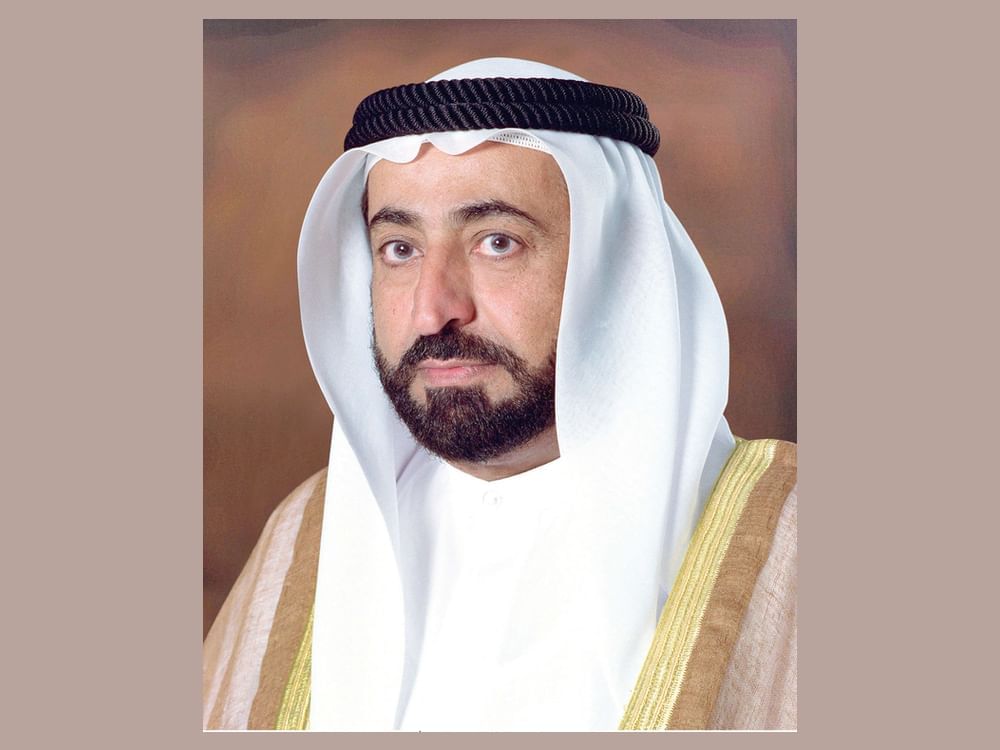As part of its efforts to build bridges of communication and dialogue with countries and cultures of the world, the Emirate of Sharjah showcased an aspect of its cultural history throughout ancient times in the Italian capital, Rome.
The emirate revealed evidence proving its historical presence as a major commercial and cultural centre on the Spice Route, as well as even older remnants such as Acheulean stone tools from 500,000 years ago and evidence of human migration dating back 210,000 years.
On the sidelines of the exhibition titled ‘From Sharjah to Rome: Along the Spice Route’, organised by Sharjah Archaeology Authority at Rome’s iconic Colosseum, the Department of Government Relations (DGR) in Sharjah hosted a Gala dinner in the presence of Sheikha Bodour bint Sultan Al Qasimi, Chairperson of the Sharjah Investment and Development Authority (Shurooq), and Sheikh Fahim Al Qasimi, Chairman of DGR, alongside prominent diplomatic figures and representatives from Italian and Emirati cultural and academic institutions.
Sheikha Bodour Al Qasimi stressed that the exhibition was a celebration of Sharjah’s historical and cultural heritage.
She said, “Sharjah’s story is one of human connection—of cultures, ideas, and histories interwoven through centuries of trade and exchange. Nowhere is this more apparent than in Al Faya, a site so historically important it’s on the UNESCO World Heritage Tentative List. But beyond the stunning artefacts, this exhibition is an invitation to understand the depth of our shared heritage. By surfacing Sharjah’s role as a vital waypoint on the Spice Route, we reaffirm the value of protecting our cultural legacy while strengthening the ties that bind us over geography and time.”
Sheikh Fahim Al Qasimi, in his welcome address, highlighted the exhibition’s role in enhancing cultural and diplomatic ties between Sharjah and Rome. He said, “The exhibition ‘From Sharjah to Rome: Along the Spice Route’ is more than a retrospective of historical milestones. It is a testament to the power of shared heritage in connecting civilisations. By hosting this event in the heart of Rome, we bring Sharjah’s vision to life by preserving human heritage and presenting it in a contemporary context that strengthens cross-cultural understanding.”
The DGR Chairman added, “Culture is not only a reflection of the past but a foundation for shaping the future. Today, we showcase a tangible example of how heritage can be leveraged to foster dialogue and strengthen cultural and diplomatic relationships.”
As part of the cultural seminar, Issa Yousif, Director General of the Sharjah Archaeology Authority, delivered a lecture titled “Unearthing a shared archaeological heritage,” where he explored Sharjah’s historical role as a major trade and cultural centre in ancient times.
He detailed the emirate’s strategic position along the Spice Route, where caravans and merchant ships transported valuable goods from the Arabian Peninsula to Roman ports in the Mediterranean. Yousif also reaffirmed the Authority’s commitment to preserving Sharjah’s historical legacy through research and studies that promote mutual cultural understanding.
Sharjah’s deep-rooted history took centre stage in Rome through a presentation by Kholoud Al Hooli Al Suwaidi, Director of the Tangible Cultural Heritage Department at the Sharjah Archaeology Authority. In her talk, ‘Sharjah’s Cultural Legacy,’ she explored the emirate’s rich archaeological heritage, particularly discoveries from its central region.
She highlighted key sites, including the Suhaila Archaeological Site, where Acheulean stone tools dating back 500,000 years were uncovered, and Al Faya, a site containing evidence of human migration from 210,000 years ago that is currently considered for UNESCO World Heritage status.
She stressed that Sharjah’s commitment to cultural preservation is evident in the six archaeological sites on UNESCO’s Tentative List. These include rock art sites in Khatm Al Melaha and Khorfakkan, dating back 7,000 years, Wadi Al Helo, a significant centre for copper production during the Bronze Age, and Mleiha, a major pre-Islamic trade hub.
Meanwhile, the exhibition provided attendees with a rare opportunity to explore Sharjah’s historical significance as a key centre of trade and culture along the ancient Spice Route. Through artefacts, interactive digital media, and visual presentations, visitors gained deeper insight into the emirate’s strategic geographical and cultural role throughout history.
![]() Follow Emirates 24|7 on Google News.
Follow Emirates 24|7 on Google News.





